Key Points and Summary – The Boeing X-32, derided for its “ugly,” cartoonish appearance, was a formidable contender in the Joint Strike Fighter competition but ultimately lost to what became the F-35.
-Despite its superb handling qualities, which one test pilot compared to an F/A-18, the X-32’s downfall was its flawed and complex Short Take-Off and Vertical Landing (STOVL) design.
(Follow us on Google News and YouTube for more content like this.)
-It suffered from engine exhaust being ingested back into its intake, causing overheating and reduced thrust.
-This critical performance issue, demonstrated during flight tests, handed the contract to Lockheed Martin’s more effective X-35, relegating the X-32 to the U.S. Air Force Museum, where all the original photos and video in this essay were taken just yesterday.
Boeing’s X-32 Stealth Fighter Had 1 Mission: Beat the F-35
During the Department of Defense’s Joint Strike Fighter (JSF) program in the 1990s, Boeing and Lockheed Martin presented the X-32 and X-35 concept demonstrators, respectively, for the Air Force to select as the final design.
Lockheed won the competition and has now built over 1,200 F-35s with more still in production today. The F-35 is in use with the US and 20 countries.
But what about the Boeing X-32?
Boeing built two variants, the X-32A and X-32B, which performed Conventional Take-Off and Landings (CTOL), Short Take-Off and Vertical Landings (STOVL), and as a Carrier Variant.
But why did the X-32 lose to the F-35? Let’s take a look at Boeing’s prototype for the Joint Strike Fighter Program.
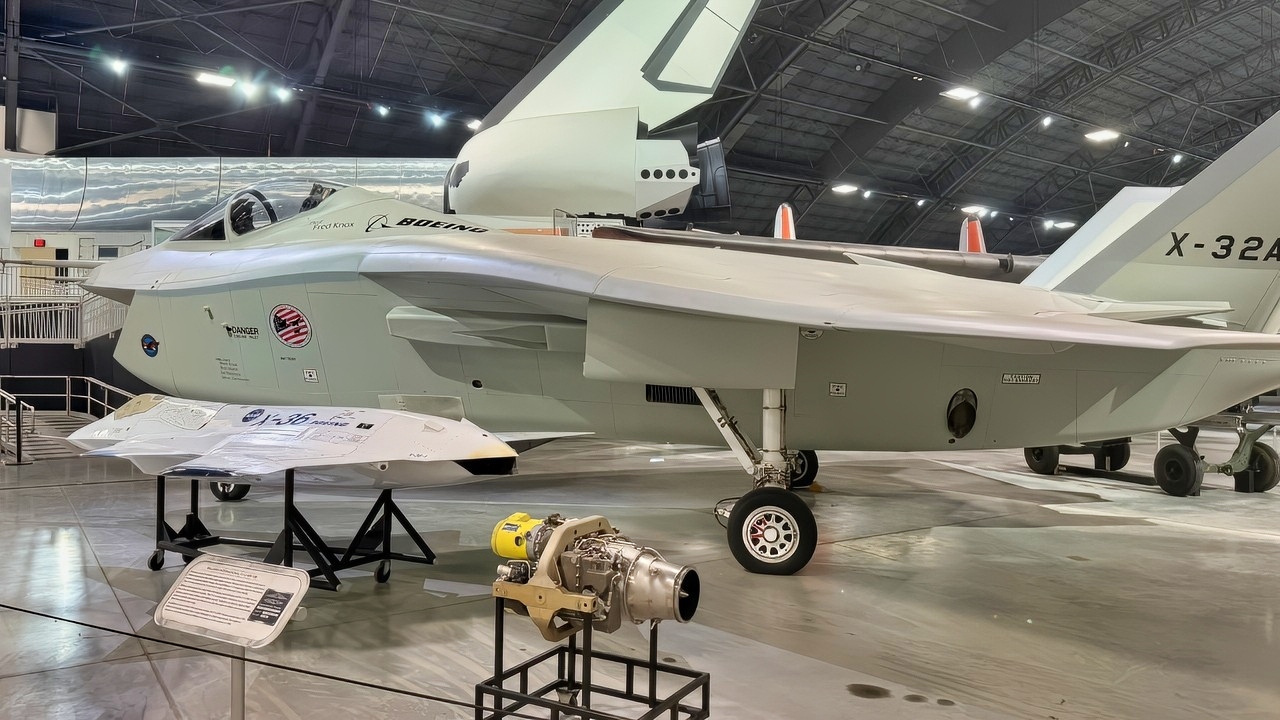
Boeing X-32 Full View. Image Credit: National Security Journal.
Meet the Boeing X-32
The Joint Strike Fighter (JSF) Program was the Department of Defense’s (DoD) program for defining affordable, next-generation strike aircraft weapon systems for the Navy, Air Force, Marines, and our allies.
The DoD created this joint program charter to bring the Navy, Air Force, and Marine Corps together to reduce the costs of future strike warfare concepts by maturing and transitioning advanced technologies, components, and processes.
First flying in September 2000, the X-32 made 66 flights during its four-month testing period. These flights demonstrated the aircraft’s handling qualities for inflight refueling, weapons bay operations, and supersonic flight.
The X-32 was crewed by only one pilot and was powered by a Pratt & Whitney F119-614 afterburning turbofan of approximately 50,000 pounds of thrust, pushing the aircraft to a top speed of Mach 1.6, or about 1,200 mph.

X-32 and YF-23 Together at U.S. Air Force Museum. Image: National Security Journal.
The aircraft would carry either the 20 mm M61A2 cannon, or the 27 mm Mauser BK-27 cannon, 6 AMRAAM air-air missiles, 2 AMRAAM air-air missiles, 2 x 2,000 lb (900 kg) class guided bombs, 15,000 lb (6,800 kg) of a full range of external stores, as well as Anti-radiation missiles for enemy suppression missions, Air-to-surface weapons, and Auxiliary fuel tanks
The Vertical Landings proved the difference, as the Lockheed Martin X-35 performed significantly better in that competition stage, thanks to its advanced lift fan and exhaust system, which provided a crucial technological advantage.
The X-32 had a weaker V/STOL design, which caused hot air from the plane’s exhaust to be recirculated into its modified intake, weakening the thrust it could produce and leading to overheating issues with the engine.
It Wasn’t Pretty, It Resembled A Cartoon Character
The X-32 wasn’t your typical-looking fighter aircraft. Looking at it from the front, if you painted eyes on the cockpit glass, you’d swear the aircraft was a character from the Disney/Pixar film Cars.

Side view of X-32 Boeing Stealth Fighter. Image Credit: National Security Journal.
Others likened it to a smiling Hippo. Regardless, neither one would be perceived as complementary. However, the stealth handled well.
“Boeing knew they had a problem with that, if you will, and to address it, they had a little mantra that said, ‘Look, you’re taking it to war, not to the senior prom.’ That got a lot of traction,” said retired Navy Commander Phillip “Rowdy” Yates, a former Naval aviator who served as the test pilot for the Boeing team and said he was thrilled to fly it.
Yates said the chance to test the X-32 was the high point of his career as a test pilot. “Dream come true. You can use all those trite phrases. Many of my peers and contemporaries were likely envious of what I was able to accomplish with the X-32. I don’t know how to say it any better than just that it was the highlight of my career.”
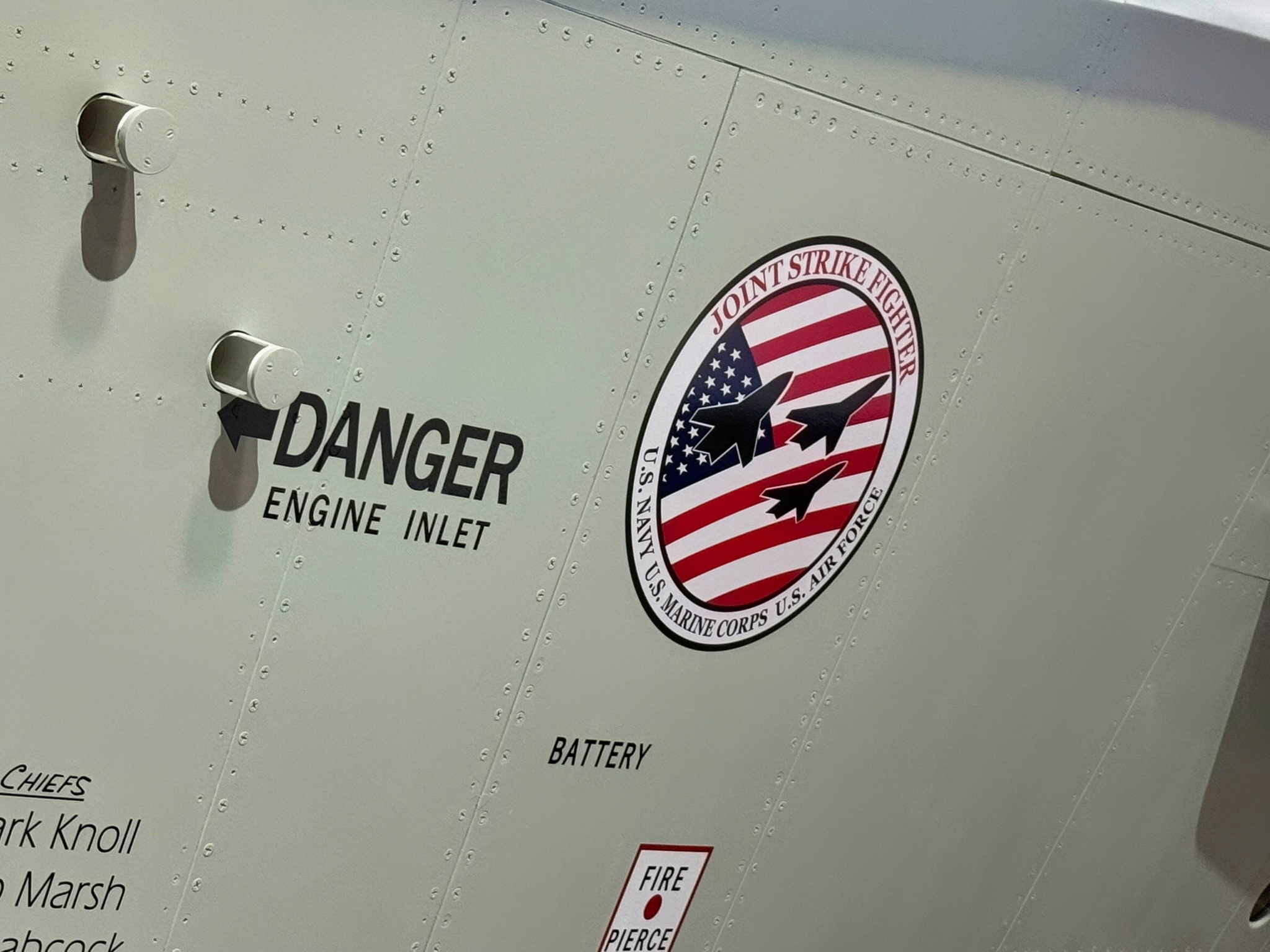
Boeing X-32 Fighter Side Shot. Image by National Security Journal. Image taken on July 20, 2025.
He was most involved with testing how the aircraft responded during carrier approaches and evaluating the handling properties of the X-32.
“Did it feel like an airplane you’d want to take to the boat?” A retired naval aviator asked Yates during an interview.
“That’s exactly the comment I made,” Yates responded.
“They had leveraged F-18 handling qualities and control laws extensively for the X-32. Having flown the F-18 at the ship, that was the comment I made after just a couple of FCLP [Field Carrier Landing Practice], what we could call bounce periods. I would take that aircraft to the ship tomorrow.
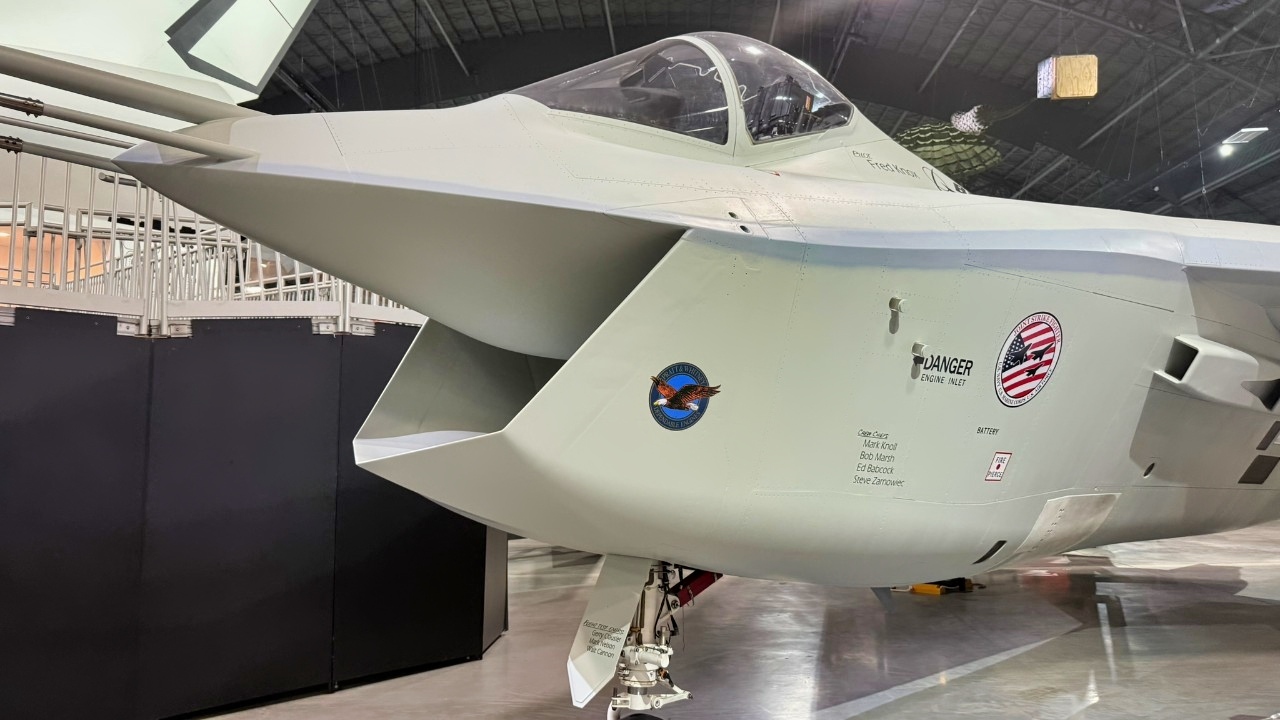
Up Close to Boeing X-32 Fighter. Image Credit: National Security Journal Taken 7/20/2025.
“It was handling that smoothly and precisely. I could make both fine and gross corrections to return to the centerline and the glide path. There were no issues with the handling qualities of the X-32 that I flew,” Yates added.
The X-32 lost the JSF competition to the F-35; however, some components of the X-32 have been retained and utilized. The “JSF Array” radar developed for the X-32 became the basis for the Raytheon AN/APG-79 radar that flies on board the F/A-18E/F /F Super Hornet and the EA-18G Growler EW aircraft.
However, the aircraft remains a part of the big “what ifs” in US aviation history.
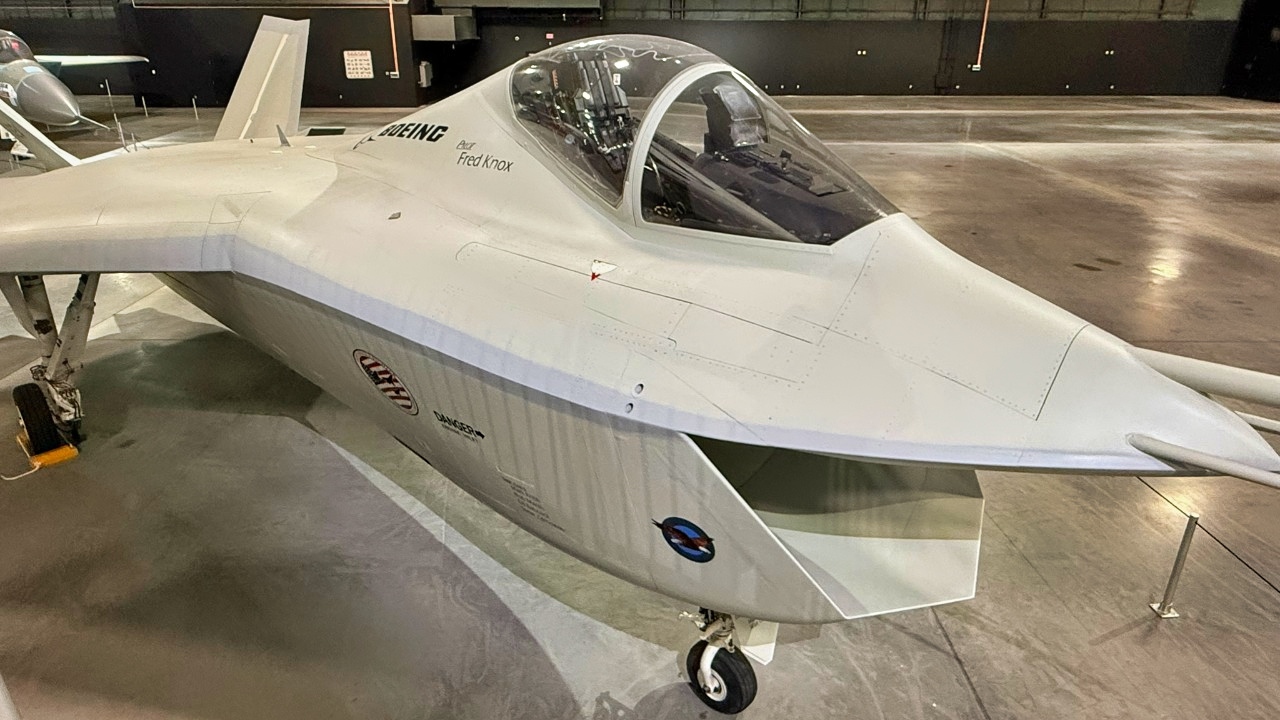
Boeing X-32 Stealth Fighter. Image Credit: National Security Journal.
About the Author:
Steve Balestrieri is a National Security Columnist. He served as a US Army Special Forces NCO and Warrant Officer. In addition to writing on defense, he covers the NFL for PatsFans.com and is a member of the Pro Football Writers of America (PFWA). His work was regularly featured in many military publications.
More Military
We Almost Touched the F-117 Stealth Fighter


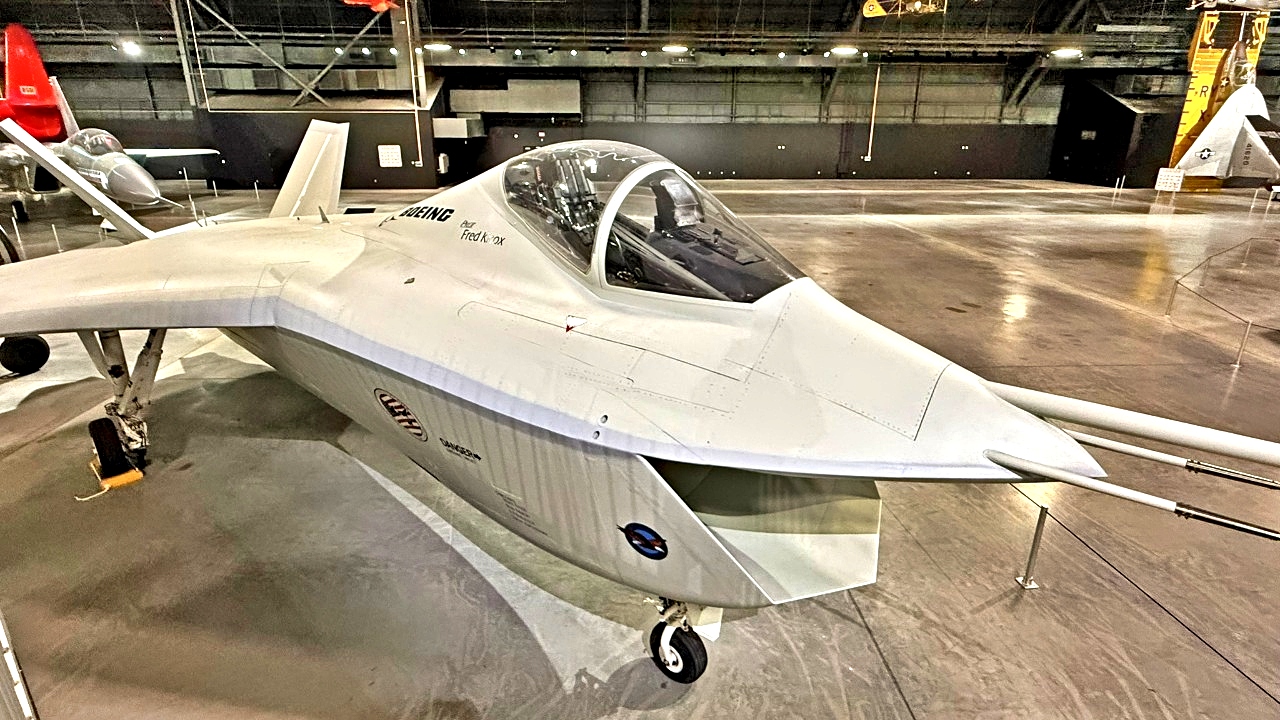








Jerrold Dawes
July 22, 2025 at 10:03 pm
From certain angles it looked like the Oscar Mayer Wienermobile with wings
Mitch C.
July 23, 2025 at 2:01 pm
What these articles never seem to mention is that one of the big reasons it lost was that the Air Force decided early on that it liked the look of the X-35 more, and they thought of it as a single-engine F-22 (which was a huge PR asset for them at the time). So even though it was a joint competition, the Air Force changed its requirements AFTER both planes had been developed and delivered for testing. The changes specifically favored the X-35, and forced the X-32 team to have to drastically redesign their aircraft in the middle of the competition. Pretty much every problem the X-32 had after that were as a result of those rushed changes. The thing is, the Air Force previously pulled the same stunt during the joint competition that resulted them in them selecting the F-16. That time, though, the Navy and Marines quit the competition because the Air Force was being impossible to work with, and they approached the team for the F-16s competitor (the YF-17 Cobra), and asked them to build them a new plane based on it, but without having to worry about what the Air Force wanted. Northrop did some redesigns, and then sold the contract to McDonnell-Douglas (who had more experience building carrier aircraft), and the plane became the F/A-18. McDonnell-Douglas was later bought by Boeing, who then produced the Super Hornet versions of the F/A-18, and then the X-32, which was largely informed by lessons learned there.
The X-32 that was ultimately judged by the JSF evaluators was a completely different plane from the X-32 that had been given to them to evaluate. Meanwhile, the X-35 got preferential treatment, and extra chances to correct various issues it had during testing.
Granted, the F-35 is an outstanding plane, but I can’t help thinking that the F-32 (as originally spec’d) would have been even better.